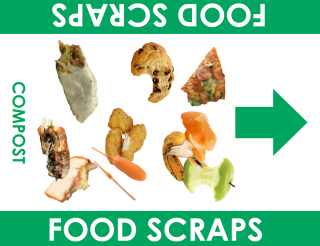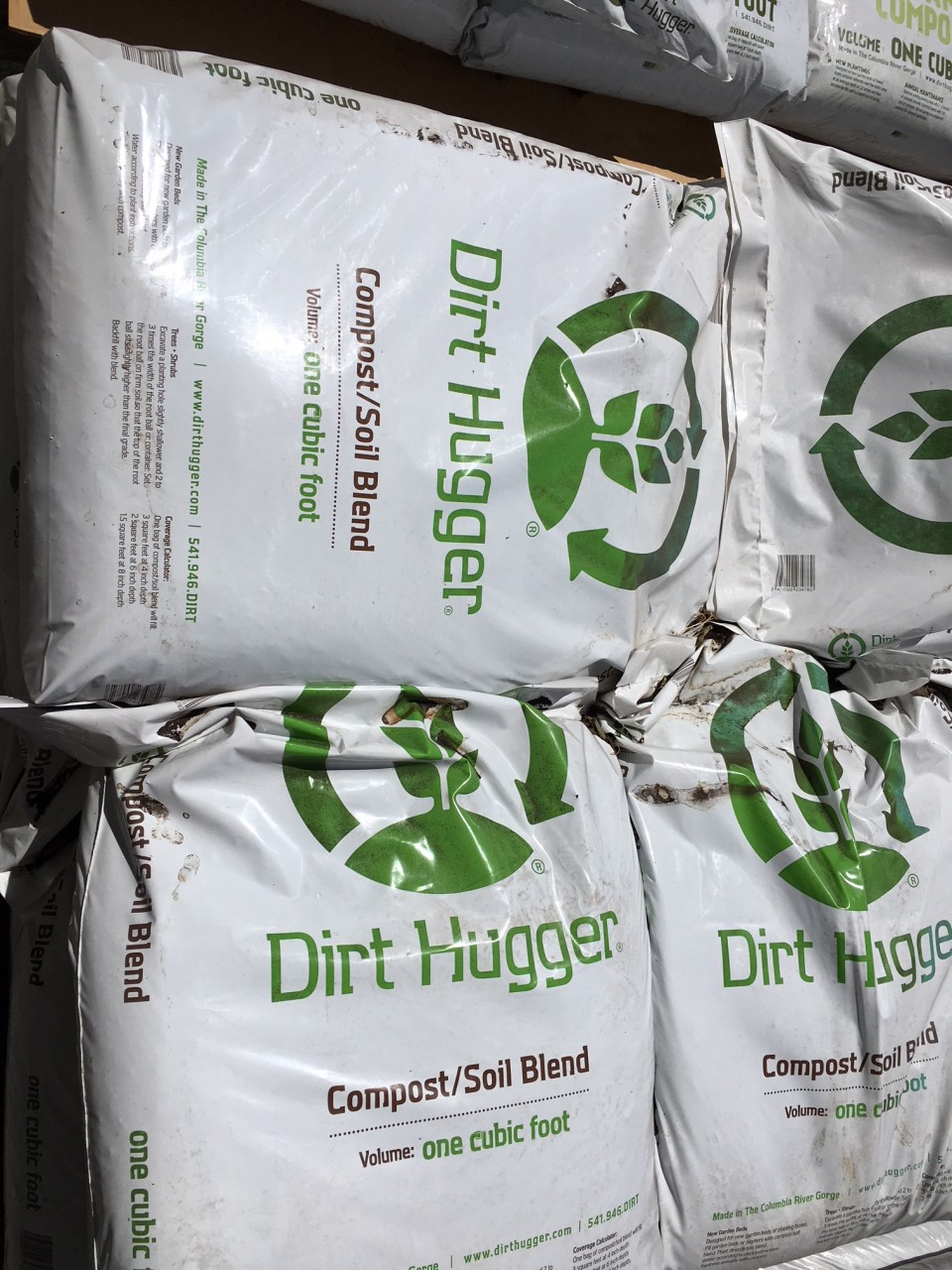Clark County Green News
Field Trip! Dirt Hugger Tour Recap
With many schools serving over 350 meals each day, and the rest of the student body bringing meals from home with a wide array of foods and packaging, a lot of waste is generated in the cafeteria. Clark County currently sends over 200 shipping containers, each filled with 60,000 pounds of trash, to the landfill each week. In an effort to reduce waste going to the landfill, Clark County Green Schools helps supply school cafeterias with the tools and educational support they need to help students and staff reduce, reuse, recycle, and compost as much of what is used in the cafeteria as possible (check out the tools we offer to help schools reduce waste, here). Over 80 Clark County schools collect food waste in the cafeteria to be composted. Just like with recycling, there are items that can be collected in those carts for composting and items that should stay out!
Keeping the carts free from contamination is a big job that involves everyone in the cafeteria, including students, teachers and staff. To find out why certain items are accepted in the compost carts but other items aren't, we took a group of local school staff and partners to tour the facility that turns food waste from Clark County into compost, Dirt Hugger. Joining us on the tour were: teachers, custodians, kitchen staff, food service providers, school district nutrition services staff, the driver from Waste Connections who collects Clark County's food waste, and educators and staff with community programs like the nutrition education program Snap Ed from the Washington State University Extension.
Dirt Hugger is located in Dallesport, Washington, about 90 miles away in the Columbia River Gorge. The facility can turn food waste and yard debris into compost in about 90 days (watch our video to see how!). During the tour, we learned a lot of new and interesting things about Dirt Hugger and turning food waste from schools into compost, including:
Why they don't accept products that are labeled as "compostable": There are actually many reasons that compost facilities, including Dirt Hugger, don't accept loads containing disposable products, even if they're products marketed as being "compostable". Products labeled as compostable often don't break down even after multiple trips through a facility's composting process, and no one wants to buy compost with pieces of disposables in it! "We have found that compostable plastics have actually opened the contamination flood gates for all plastics, and they are not easily distinguishable from one another," said our tour guide Nate. For more about why products labeled as compostable aren't accepted in our system and aren't worth the extra cost, head over to this blog post from Clark County Green Neighbors.
Why they don't accept paper products: Paper products can really complicate the "recipes" used to create quality compost and can create a product that is not allowed to be used in certified organic farming. Allowing paper products in food waste collection programs has also been shown to increase general contamination. Time and time again, programs around the country find that the system works best, and creates the best product, when only food waste is accepted.
The staggering amount (and types) of contamination: Employees called "pickers" spend their days in the elements climbing up and down the piles of materials, pulling out lots of contamination. This is a really tough job, especially in this environment east of the Cascades where the weather in the summer can be brutally hot, winters can be bitingly cold, and the winds whip nearly constantly. Our tour guide, Nate, estimated that six 64-gallon bins full of contamination are removed from delivered materials daily. Even with these "pickers", some contamination still makes it through to the final step. On our tour, one of our staff joked, "Look for a shoe; every time I take a tour here, I see at least one shoe." Sure enough, within about five minutes, our group found a shoe among the piles of waste delivered to Dirt Hugger. The most common contaminants are single-use plastic items and dining utensils. Dirt Hugger is planning to build a tall fence around their entire site to catch plastic film and other contaminants that may blow off piles in the strong Gorge winds.
How they incorporate being "green" into their operations: The heat naturally generated by composting is used to heat their office building in the winter. To create quality compost efficiently, water needs to be added to the piles regularly. Instead of using fresh drinking water, Dirt Hugger goes to local breweries and collects their waste water, storing it in tanks until they need to add moisture to a pile. Water that leaches from the piles throughout the site is also collected and re-used to add moisture during the composting process.
Where the compost goes: A large portion of the finished product goes to local orchards, some of the same orchards that are some of the biggest sources of organics processed at Dirt Hugger. Dirt Hugger creates specialty soil blends, adding ingredients like topsoil from the quarry next door to their compost. Their blends are used by local schools, businesses, and organizations in landscaping and gardening. The public can purchase Dirt Hugger compost and soil blends by the bag or truckload at their Dallesport facility or select retailers. Check out their website to learn more about where and how to purchase Dirt Hugger compost and soil products.
During our stop for lunch before driving back to Vancouver, our group discussed what tools and strategies school staff have found helpful in making their school's composting efforts successful. These strategies included everything from serving food that students want to eat, reducing food waste through the use of share tables, programs and events that encourage kids to try new foods, conducting waste audits, assemblies about recycling and composting, and having students monitor the sort line at lunch.
There was so much great information shared, ideas brainstormed, and connections made during this outing, and we hope to do more of these tours in the future. We will announce any upcoming tours on our website but also in our monthly newsletter; if you're not already subscribed, sign up today!
When you subscribe to the blog, we will send you an e-mail when there are new updates on the site so you wouldn't miss them.







